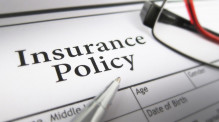Don’t invest unless you’re prepared to lose all the money you invest. NextFin promotes high - risk investments and you are unlikely to be protected if something goes wrong.
Take 2 minutes to learn more.

With non-essential shops and retailers having reopened on June 15, business as usual may look very different after the coronavirus pandemic. By July, the government would like to see remaining small businesses that have been forced to close, including hairdressers and beauty salons also reopen.
But with social distancing still in place, what exactly do you need to do as a business owner to get your enterprise operating again after months of lockdown? And more importantly, how do you ensure you and your customers remain safe? In this guide, we give you our top tips to getting back to business.
The most important part of preparing to return to work is to ensure the safety of your workplace.
In doing this, you should carry out a rigorous risk assessment in line with the Health and Safety Executive Guidelines. As part of this risk assessment, try and think of the issues that are likely to increase risk:
Once you’ve carried out your risk assessment, make sure it is shared with your employees and on your website so that everyone is aware of what needs to be done to mitigate the risk of infection.
While shops may be opening once again, the risk of infection is still relatively high and as such social distancing is very much in place. A fundamental part of your risk assessment should therefore be the enforcement of the statutory 2 meter social distancing.
You can remind people to do this in a number of ways, such as:
As well as the need for social distancing, when reopening you should ensure that there is a facility for customers and employees to regularly wash their hands, as well as a regular disinfection of work surfaces. To do this, you should:
Where it’s not possible for people to be 2m apart, you should do everything practical to manage the transmission risk by:
Be creative. If you want to be successful while ensuring health and safety, look at alternative options. If you are a restaurant or cafe, look at online delivery services such as Deliveroo, or if you provide a product, marketplaces such as Amazon, Ebay or Gumtree to help boost your sales. If you are a service provider, centre your marketing strategy around safety. For example, that you use masks, PPE and hand sanitizer and can provide your service in the safest possible conditions.
Authors: Oliver Murphy & Sacha Bright
Disclaimer:
To the best of our knowledge, the information we have provided is correct at the time of publishing. SEIS and EIS tax benefits are dependent on your financial circumstances. Sacha Bright is not a solicitor or accountant and we recommend that you seek professional advice on any topic discussed.
Tagged: coronavirus news business sme entrepreneur

Alternative Finance: The Four Types Of Crowdfunding

What is Business Interruption Insurance?

The pros and cons to alternative investment in to private companies via debt or equity

What Is The Term Funding Scheme, And Why Is It So Important To Extend It To P2P Lenders?
Should I Invest in P2P?
Alternative Finance: The Four Types Of Crowdfunding
The pros and cons to alternative investment in to private companies via debt or equity
What is Business Interruption Insurance?
Should I Invest in P2P?
Self-Employed to Benefit From Second Stage of Support Scheme
How To Start A Business Post-Covid-19
Business Banking Resolution Service To Open In November
Over 1.2m Businesses Have Benefited From Coronavirus Lending Schemes
What is The Start Up Loan Scheme?
Figures Show 730,000 Job Losses Since Start of Lockdown


As seen in:




